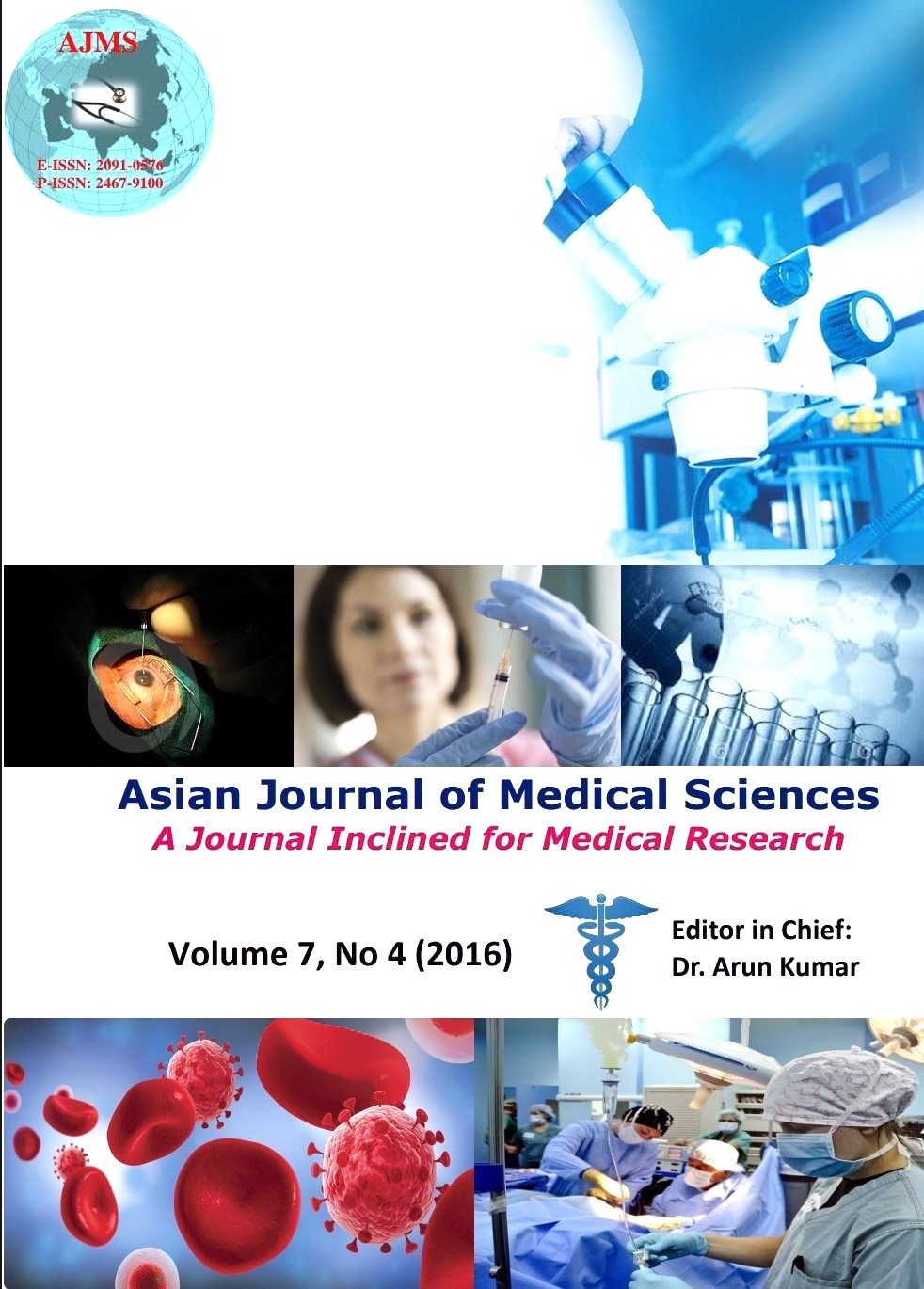Serial estimation of serum albumin and its role in traumatic brain injury patients
Keywords:
Traumatic brain injury, Hypoalbuminemia, Glasgow Coma Scale, Glasgow Outcome Scale, Bromocresol green.Abstract
Background: Serum albumin is routinely measured; cheap and easily available test even in remote areas laboratories. Albumin is the major protein of human plasma and one of the negative acute phase reactants reported to fall as a component of metabolic response to injury or infection, independent of the nutritional status. Even though this has also been noted in patients with head injury and its overall significance with respect to neurological outcome following head injury are yet to be established.
Aims and Objectives: To assess the role of serum albumin in outcome of head injury patient.
Material and Methods: This is a prospective case control study. Total 200 cases of traumatic brain injury [152 male and 48 female] were studied in NRS Medical College, Kolkata from September 2012 to October 2013. Serum albumin estimation, along with clinical and radiological data was collected. Serum albumin was compared between among various subgroups and outcome was assessed by Glasgow Coma Scale at 6 months.
Results: In present study 86(43%) patients having hypoalbuminemia (< 3.5gm/dl) and falling trend in admission serum albumin levels from day 1 to 10th day with decrement in GCS was statistically highly significant (p < 0.001) as hypoalbuminemia was noted in 68%, 39.65 and 33.43% patients with severe, moderate and mild head injury respectively. The present study was showed that female TBI patients having less no. of hypoalbuminemia compare to male as 77.7%, 45.4%, 31.4% male and 42.8%, 28.5%, 27.2% female having hypoalbuminemia (< 3.5gm/dl) in severe, moderate and mild head injury respectively and statistically significant difference in severe and moderate group.
Conclusion: The serial estimation of serum albumin in traumatic brain injury patients provides the treating doctor an insight in the prognosis of the patient so that they can be managed aggressively.
Asian Journal of Medical Sciences Vol.7(4) 2016 31-38
Downloads
Downloads
Additional Files
- Table 1d: Patients distribution according to serum albumin level and outcome on GOS scale.
- Table1c: Distribution of hypoalbuminemia (<3.5gm/dl) in TBI patients according to gender and severity of head injury.
- Table1b: Comparison of mean age and mean serum albumin between TBI patients and control group.
- Table1a: Distribution of traumatic brain injury patients according to site of injuries.
- Table 1e: Distribution of patients according to gender and outcome on GOS scale.
- Table2a: Comparison of serum albumin among TBI patients divided according to severity on different days.
- Table 2b: Comparison of serum albumin among outcome groups on different days.
- Table 2c: Comparison of serum albumin among gender on different days.
- Table 2d: Comparison of serum albumin among survivor and non survivor on different days.
- Table 3a & b: Result of multivariate logistic regression equation to predict the outcome and mortality.
- Accuracy of prediction for outcome [survivor] with multiple logistic regression equation.
- Figure 1a. Comparison of serum total protein level on two different days in study group.
- Figure 1b. Distribution of TBI patients in two groups’ survivor [live] and non survivor [dead].
- Figure 1c. Distribution of surgical managed patient in outcome groups.
- Figure 1d: Comparison of serum albumin and Neuro ICU stay & (MV) mechanical ventilator days.
- Figure 1e: Comparison of complications among favorable and unfavorable groups.
- REFERENCES
Published
How to Cite
Issue
Section
License
Authors who publish with this journal agree to the following terms:
- The journal holds copyright and publishes the work under a Creative Commons CC-BY-NC license that permits use, distribution and reprduction in any medium, provided the original work is properly cited and is not used for commercial purposes. The journal should be recognised as the original publisher of this work.
- Authors are able to enter into separate, additional contractual arrangements for the non-exclusive distribution of the journal's published version of the work (e.g., post it to an institutional repository or publish it in a book), with an acknowledgement of its initial publication in this journal.
- Authors are permitted and encouraged to post their work online (e.g., in institutional repositories or on their website) prior to and during the submission process, as it can lead to productive exchanges, as well as earlier and greater citation of published work (See The Effect of Open Access).




